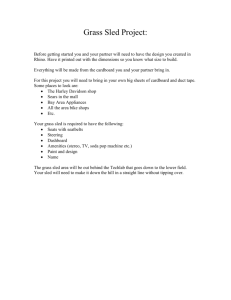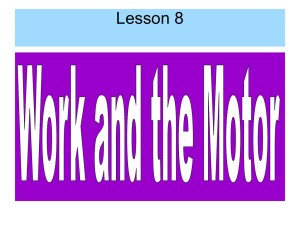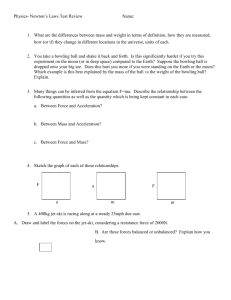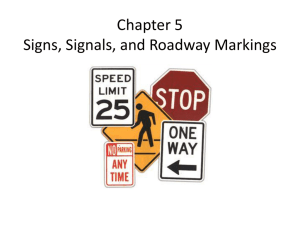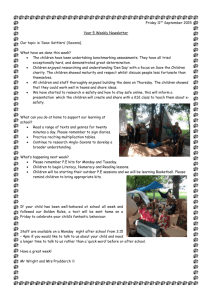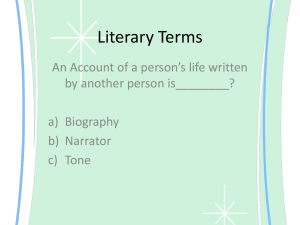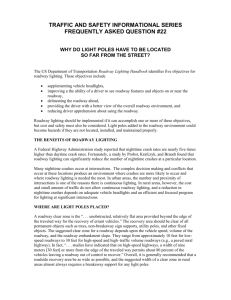thrust rocks
advertisement
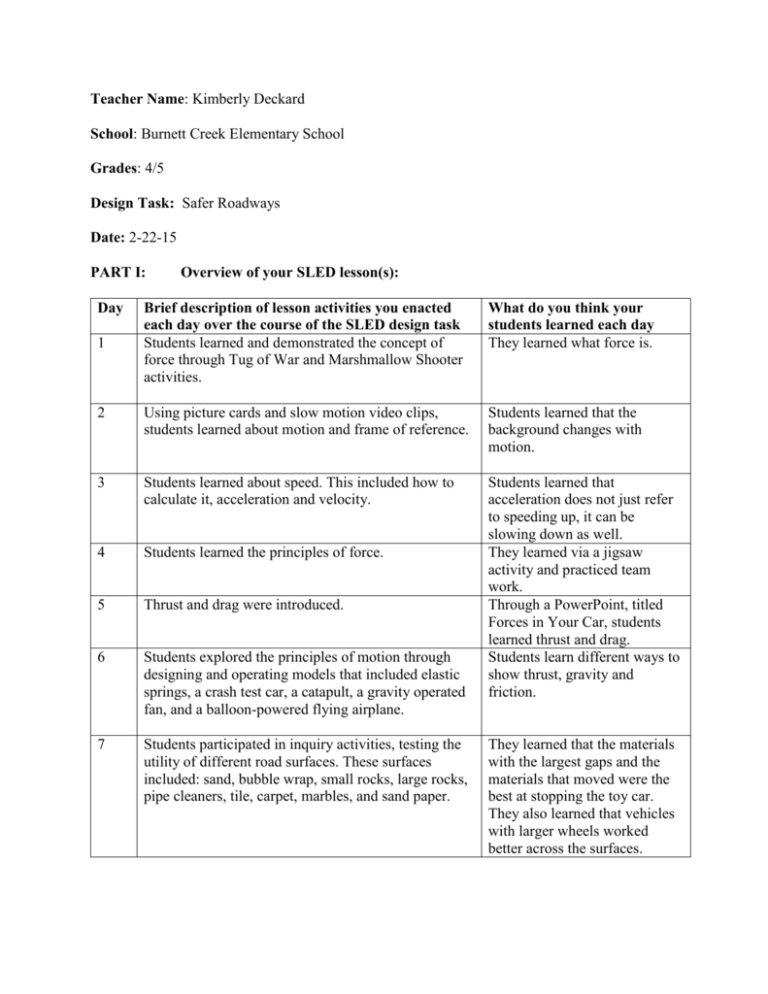
Teacher Name: Kimberly Deckard School: Burnett Creek Elementary School Grades: 4/5 Design Task: Safer Roadways Date: 2-22-15 PART I: Day Overview of your SLED lesson(s): Brief description of lesson activities you enacted each day over the course of the SLED design task Students learned and demonstrated the concept of force through Tug of War and Marshmallow Shooter activities. What do you think your students learned each day They learned what force is. 2 Using picture cards and slow motion video clips, students learned about motion and frame of reference. Students learned that the background changes with motion. 3 Students learned about speed. This included how to calculate it, acceleration and velocity. 4 Students learned the principles of force. 5 Thrust and drag were introduced. 6 Students explored the principles of motion through designing and operating models that included elastic springs, a crash test car, a catapult, a gravity operated fan, and a balloon-powered flying airplane. Students learned that acceleration does not just refer to speeding up, it can be slowing down as well. They learned via a jigsaw activity and practiced team work. Through a PowerPoint, titled Forces in Your Car, students learned thrust and drag. Students learn different ways to show thrust, gravity and friction. 7 Students participated in inquiry activities, testing the utility of different road surfaces. These surfaces included: sand, bubble wrap, small rocks, large rocks, pipe cleaners, tile, carpet, marbles, and sand paper. 1 They learned that the materials with the largest gaps and the materials that moved were the best at stopping the toy car. They also learned that vehicles with larger wheels worked better across the surfaces. 2 8 Students were presented with the “Safer Roadway” problem. In their science notebooks, they recorded the problem, the client, constraints, materials, and end user. The next day each student drew his/her own design for the safer roadway, and then they collaborated with their group to create a group design. The following day, each group built and tested their design. Some groups had to re-design and test, again. They each presented their designs to the classroom. Students learned the Engineering Design Task Process. They learned how to design a prototype under the material and time constraints. They also learned that many times, engineers have to re-design if their prototype does not work. Please answer the questions below: 1. What worked well? By conducting the inquiries ahead of time, students had a clear understanding of which surfaces created the safer roadway. They also understood how different sized tires and wheels played a role in starting/stopping of different surfaces. Allowing the students the opportunity to re-design gave each group the opportunity to ensure success. 2. What are two ways you can improve your efforts toward integrating design? A. I could allow additional opportunities to design prototypes in the classroom. B. I could also provide more examples to the students for their background knowledge. PART II: Reflection#1 on student performance: Include an image of work from one student who you thought performed well on the task. Insert the image here within the Word document. This image may be a copy of the student’s notebook entry(s) or an image of the team’s artifact or an actual picture of the student at work. 3 In the space below describe what the image(s) is about and why you would explain or characterize the student’s performance as mastery or excellent. This group’s design worked well as they used their knowledge of the road tests that they needed bumps and a “barrier” to help them. They used paper stacked at angles to help during the slow part. They then created a small ramp to slow it further down at the edge of the slow, so that the “car” and “truck” slowed and then came to a stop once it hit their “orange barrels” (as they explained them!). No damage was done to the “car” or “truck”. This group collaborated very well and were able to blend 3 out of the 4 group members’ ideas. Reflection#2 on student performance: 4 Include an image of work from one student who you thought did not perform as well (unsatisfactory) on the task. Insert the image here within the Word document. This image may be a copy of the student’s notebook entry(s) or an image of the team’s artifact or an actual picture of the student at work. In the space below describe what the image is about and why you would explain or characterize the student’s performance as unsatisfactory. This group tried to use just a couple of pieces of paper folded up to slow the moving “car” and “truck”. They were able to slow the moving objects down in the “STOP” section, but it did not completely stop the “truck”. It rolled right over it. They needed to use more materials to help them. PART III: Reflection #3 Describe one thing you enjoyed about instructing this SLED task. My favorite part about this SLED task was the inquiry lesson. I really enjoyed watching the students test out the different materials and to use accurate measurements. I enjoyed having them discuss with each group whether their predictions were correct or not as to which roads they predicted would have the most friction. I further enjoyed watching the teams work together to create the road ways. Their discussions surrounded what they had learned from their inquiries. 5 They look so forward to participating in inquiries and design-engineered tasks that they NEVER complain about their partners. Not all of the teams were successful at first, but as soon as the first team had theirs, the motivation was beefed up by the ones who had not yet been successful. I continue to enjoy watching certain students not give up and try to make it right. This design was fast and fairly inexpensive, which allowed for many more trials. The kids were so excited that some groups designed more than one roadway system. Engagement is always a great thing!! Describe one thing in your practice you would improve upon next time you implement this engineering design task or another SLED design task. Because this design took place so quickly, I would add a cost sheet and have students construct two roadway systems with a cost comparison. This would allow multiple students’ ideas and decrease the amount of wasted supplies. 7 8 9
